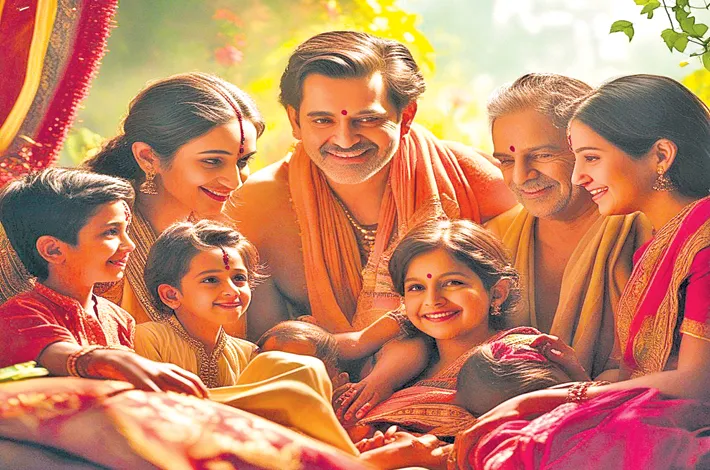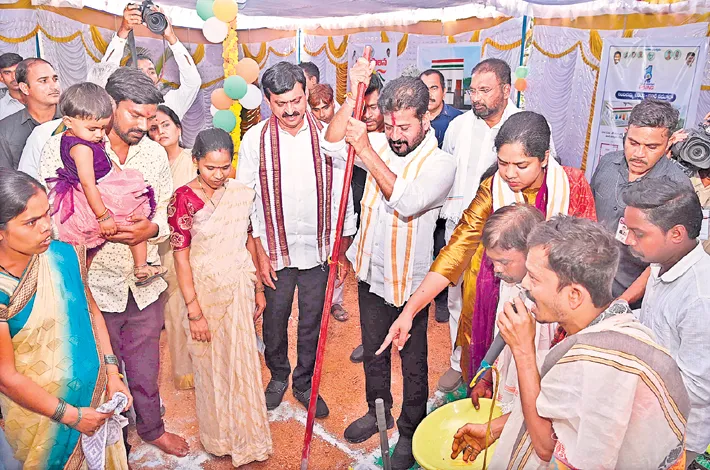To Cook, Not to Cook, that is the Question!
22-02-2025 12:00:00 AM

The debate, unfolding on social media platform X, pits the virtues of home-cooked meals against the rise of a no-kitchen culture, raising broader questions about health, community, and economic trends in India.
metro india news I hyderabad
India’s culinary landscape is at a crossroads, caught between tradition and modernity, as highlighted by a recent exchange between two prominent figures: award-winning nutrition expert Rujuta Diwekar and Zerodha co-founder Nikhil Kamath.
The debate, unfolding on social media platform X, pits the virtues of home-cooked meals against the rise of a no-kitchen culture, raising broader questions about health, community, and economic trends in India.At its core, this dialogue reflects a tension between individual lifestyle choices and their societal implications, fueled by differing perspectives from a celebrated dietician and a billionaire entrepreneur.
It all began when Nikhil Kamath, fresh from a trip to Singapore, shared an observation on X: “Most I met said they never cook at home, and others don’t have a kitchen.” For Kamath, this wasn’t just a casual remark but a springboard into an economic analysis. He noted that India’s food industry is only 30% organized—far below the 55% seen in the United States—and lacks the large-scale restaurant brands that dominate Southeast Asia.
He speculated that as India’s GDP per capita rises (potentially crossing $5,000) and labor costs increase, the country might shift toward a similar dining-out culture. “Investing/opening restaurants would be a massive opportunity,” he mused, pondering what sets India’s consumption behavior apart and whether it’s poised for transformation.
Kamath’s comments, framed as an entrepreneurial insight, quickly drew a sharp rebuttal from Rujuta Diwekar, India’s leading nutritionist and a staunch advocate for traditional eating habits. Without naming Kamath directly, she tweeted, “Do not listen to rich boys; eating at home is a healthy practice. One that can prevent many diseases, lead to sharing between communities, and deepen bonds of love and security.”
In a follow-up post, she doubled down: “Learn to cook. Practice it often. Irrespective of gender, age, or income. #gharkakhana (home-cooked meal).” Her words struck a chord with many, igniting a wave of support from netizens who championed the health and cultural merits of home cooking.
Diwekar’s credentials lend weight to her stance. A recipient of the Nutrition Award from the Asian Institute of Gastroenterology and the only Indian nutritionist with associate membership from Sports Dieticians in Australia, she has built a reputation as a science-backed voice in a field often muddied by fads. Her argument isn’t just sentimental; it’s rooted in evidence.
Home-cooked meals allow control over ingredients, portion sizes, and cooking methods—factors critical to combating lifestyle diseases like diabetes and obesity, which are surging in India. Beyond health, she frames cooking as a communal act, one that fosters intergenerational bonding and preserves culinary heritage in a rapidly globalizing world.
Kamath, on the other hand, approaches the issue from a macroeconomic lens. His observation about Singapore’s no-kitchen culture reflects a broader trend in urbanized, high-income societies where convenience and time scarcity drive dining habits. In Southeast Asia, chains like Thailand’s Minor Food or Singapore’s BreadTalk have capitalized on this shift, scaling into multi-billion-dollar enterprises.
India, with its fragmented food sector and reliance on small eateries or street vendors, lags in this regard. Kamath’s point is pragmatic: as disposable incomes rise and domestic help becomes costlier, Indians may increasingly outsource cooking, creating a lucrative market for branded restaurants.
The public response on X has largely tilted toward Diwekar, with users lauding the simplicity and wisdom of #gharkakhana. “Absolutely. Ghar ka khana is indeed the most healthy choice you can make for yourself,” one wrote. Others took digs at Kamath’s privilege:
“Rich boys also advised live on rent while buying their own home,” quipped another, while a third remarked, “Rich boys are discovering Singapore now and thinking it’s the panacea for India’s woes.” These reactions underscore a skepticism toward elite perspectives that seem detached from the average Indian’s reality, where home cooking remains a practical and cultural mainstay.
Yet, Kamath’s vision isn’t without merit. India’s urban centers—Mumbai, Bengaluru, Delhi—are already seeing a boom in food delivery apps and casual dining, driven by young professionals with little time or inclination to cook. The rise of nuclear families and shrinking living spaces further fuels this shift. A no-kitchen culture might not dominate anytime soon, but it’s not hard to imagine a future where convenience trumps tradition for a growing segment of the population. The question is whether India can balance this evolution with its deep-rooted food ethos.
Diwekar’s call to cook transcends economics, emphasizing agency and well-being. It’s a reminder that food isn’t just fuel—it’s identity, memory, and connection. Kamath’s perspective, while forward-looking, risks glossing over these intangibles in favor of market potential. Both views hold truth, but they speak to different Indias: one tethered to the hearth, the other racing toward a globalized skyline.
The debate is more than a Twitter spat—it’s a microcosm of India’s journey. Will the nation embrace the scalability of a dining-out economy, or will it double down on the resilience of home kitchens? Perhaps the answer lies in a hybrid path, where innovation meets tradition. For now, Diwekar’s rallying cry resonates louder, but Kamath’s forecast looms as a possibility too significant to ignore.








